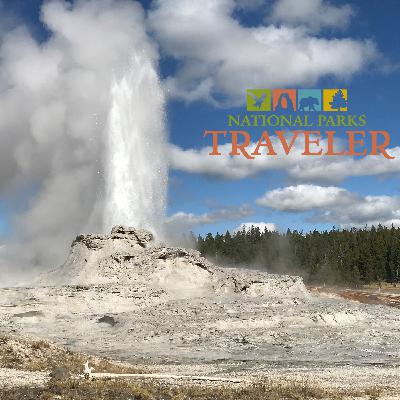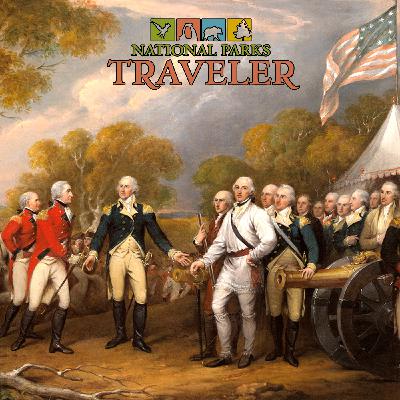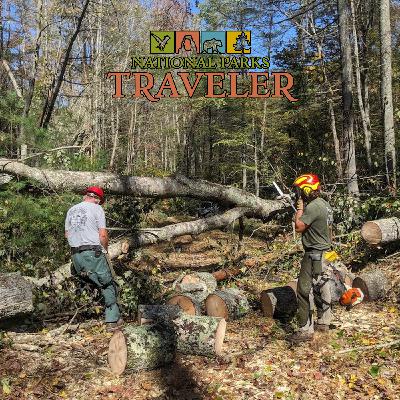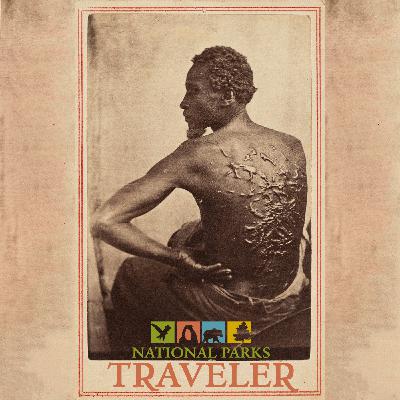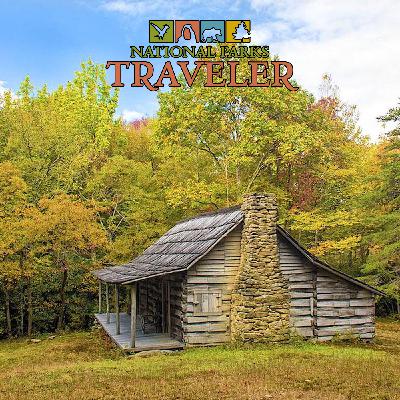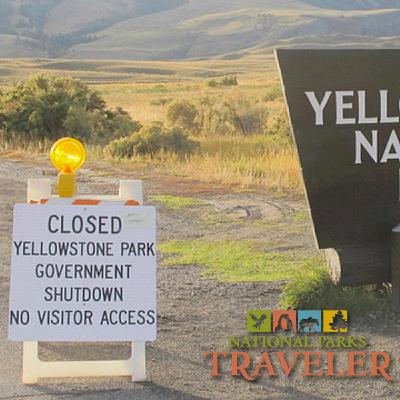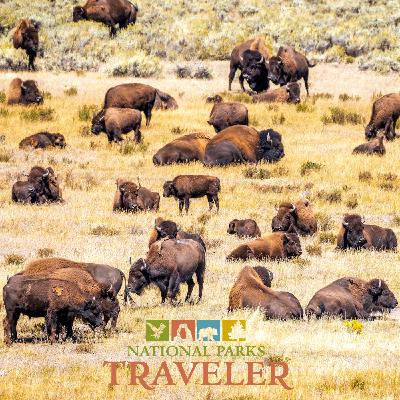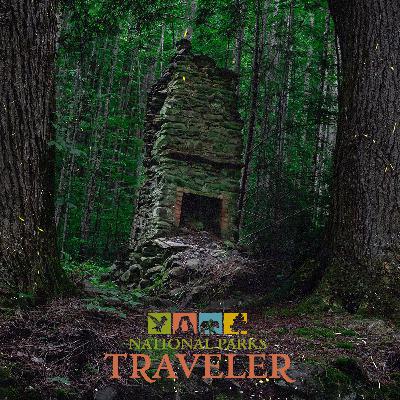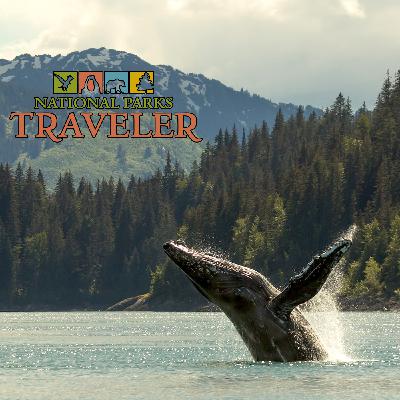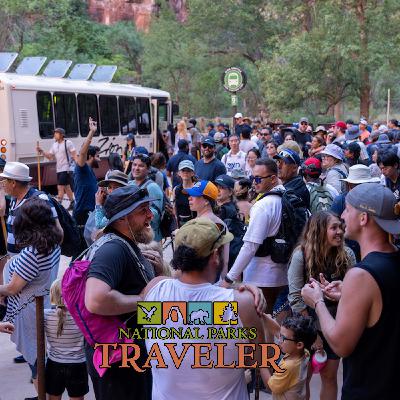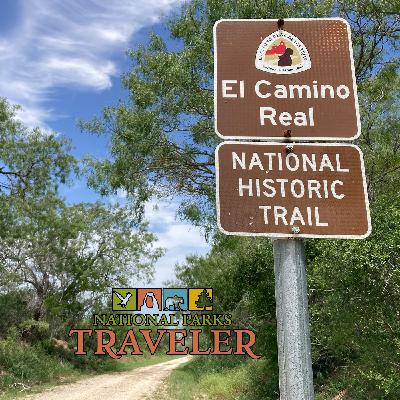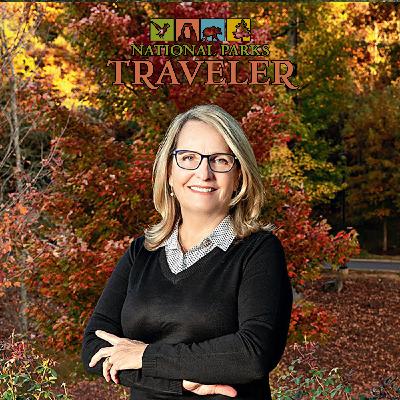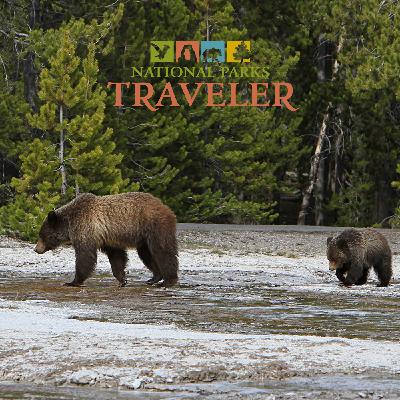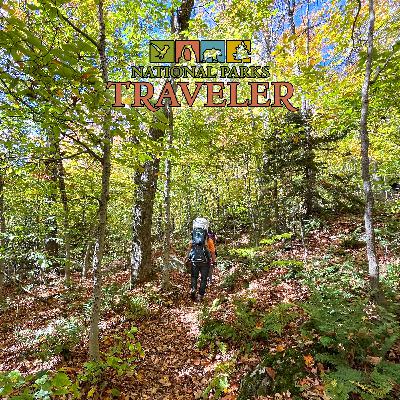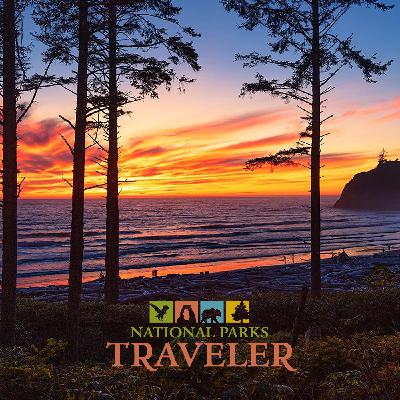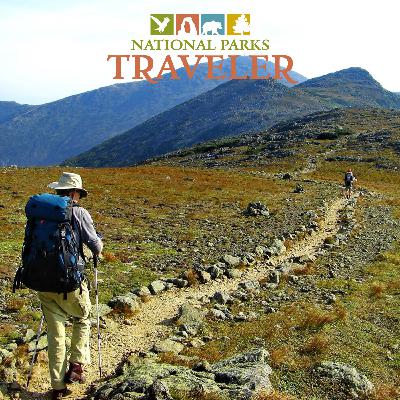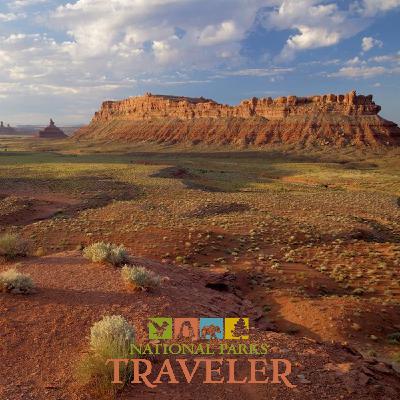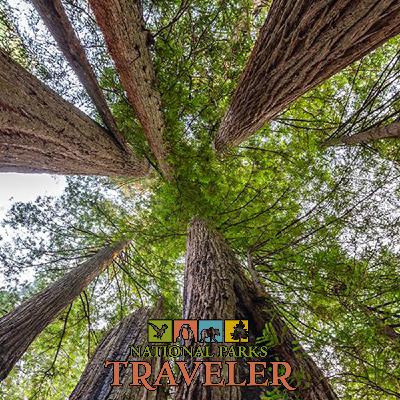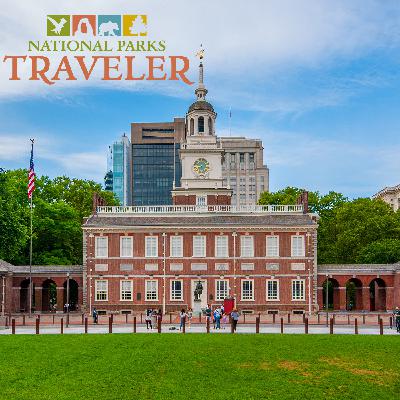Discover National Parks Traveler Podcast
National Parks Traveler Podcast

National Parks Traveler Podcast
Author: Kurt Repanshek
Subscribed: 333Played: 12,218Subscribe
Share
© Copyright 2005-2022 - National Parks Traveler
Description
National Parks Traveler is the world's top-rated, editorially independent, nonprofit media organization dedicated to covering national parks and protected areas on a daily basis.
Traveler offers readers and listeners a unique multimedia blend of news, feature content, debate, and discussion all tied to national parks and protected areas.
Traveler offers readers and listeners a unique multimedia blend of news, feature content, debate, and discussion all tied to national parks and protected areas.
361 Episodes
Reverse
What is a "typical" day at the National Parks Traveler like? When you surf over to the website there's always content there, ready to update you on news from around the National Park System. How is it generated, and who generates it? Editor Kurt Repanshek and Contributing Editor Kim O'Connell dive into the logistics of running a news operation that's focused on national parks and protected areas.
Though the Revolutionary War didn't officially end until September 1783 with the signing of the Treaty of Paris, a key turning point in the war for independence occurred six years earlier in a small corner of today's New York state. The Battle of Saratoga stretched out from September 19 until October 7, 1777, and marked the first time the British Empire had been forced to surrender. British General John Burgoyne had stretched his forces too thin in marching down from Canada with the intent of capturing Albany and wound up with huge losses in his army of nearly 7,000. His defeat at the hands of Major General Horatio Gates and General Benedict Arnold greatly raised American hopes to gain independence and convinced France to come to the colonials' aid. The story of how the British surrender came about is told at Saratoga National Historical Park near today's Stillwater, New York. To help us better understand the battles, we're joined today by Lauren Roberts, the historian at Saratoga County, New York, and Traveler Contributing Editor Kim O'Connell, who recently visited the historical park.
The federal government is shut down, but the national parks – most of them, anyway – are open. Back during his first term in office President Donald Trump also kept the parks open during the government shutdown that stretched from the end of 2018 into early 2019. That led to some vandalism to the parks and damage to some park resources. How are things going this shutdown? To explore that question, our guest today is Kristen Brengel, the senior vice president of government affairs with the National Parks Conservation Association.
Nearly 700 volunteers, including some from as far away as Japan, descended on the Appalachian Trail in the past year in an unprecedented effort to recover a landscape forever scarred by Hurricane Helene. The storm in September 2024 shut down 431 miles of the AT. Trees were snapped in half, piled in what looked like a bizarre game of pickup sticks. Landslides and flooding tore away trails and treadway. Bridges and crossovers were gone. It was — and still is — a disaster of historic proportions. But it's also a story of resiliency of the land and the people who are stewards of it. This week the Traveler's Jan Childs talks with two of the famous trail's stewards: Joe Morris, project coordinator for Tennessee Eastman Hiking and Canoeing Club, and Franklin Tate, regional director for the Appalachian Trail Conservancy, which by the way is celebrating its 100th anniversary this year.
This past week unspecified interpretive materials related to slavery were either removed or tagged for removal from Harpers Ferry National Historical Park in West Virginia. It also was reported that a troubling photo known as the "Scourged Back" that depicted the scar-riddled back of an enslaved man was taken down from Fort Pulaski National Monument in Georgia. The National Park System has been pulled into the current-day battles of wokeism of sorts through the removal of those, and likely other, interpretive materials in the parks that help us better understand enslaved history. Where it will end, or whether it will be reversed, is unknown. To better understand what's transpiring and what the impacts are, we've invited Alan Spears, the senior director for cultural resources at the National Parks Conservation Association, to join us today.
We can't escape history. We're born into a world full of it, and we're making it as we go from day to day. But how are we at preserving history? There's been a lot of concern this year that the administration of President Donald Trump is altering, if not entirely trying to erase, history. But can that actually be done? The National Park Service, often called the nation's storyteller, has been interpreting history for more than a century, and some of that interpretation revolves around sites that have lost their physical structures over the decades. Today's guest is Monica Rhodes, an internationally-recognized leader, advisor, and influencer who has directed preservation activities in 46 states and completed projects in more than 100 national parks. Today, she advises and partners with cites, universities, and other institutions to revitalize and leverage historic sites and communities to ensure a vibrant future for these places.
We've made it past Labor Day. Which means fall colors in some parts of the country aren't too far off, seasonal wildlife migrations are getting under way, and summertime crowds in the national park system have thinned out. Fall is a glorious time to be out in the park system. The question right now, though, is how will the park system be functioning come October? That's a very pertinent question, because the federal government is facing a shutdown on September 30 if Congress can't come to terms on a budget for fiscal year 2026, which starts October 1. To consider the possible options, Kristen Brengel, the senior vice president for governmental affairs for the National Parks Conservation Association, joins Editor Kurt Repanshek to discuss the situation.
Once upon a time, there were tens of millions of bison on the North American continent. Today, there are somewhere between 400,000 and 500,000. Most are in commercial herds, with a relative few in private herds and on public lands. Should there be more bison on the continent? There potentially is space for them on places like the 550,000-acre Thunder Basin National Grassland in Wyoming, the nearly 600,000-acre Buffalo Gap National Grassland in South Dakota, and the roughly 440,000-acre Comanche National Grassland in Colorado, just to name three locations. And a new study out this past week explains why bison are more beneficial for grasslands than traditional livestock, and the benefits increase as herd size does. To understand what's going on, we're joined today by Professor William Hamilton from Washington and Lee University in Virginia, one of the study's co-authors.
It's been said that the night skies are the other half of the National Park System. And it only makes sense, for when you're in a park and the sun goes down you tend to look into the night sky to spot constellations or, if you're lucky enough and in the right place, a comet overhead. Keeping that other half of the park system in mind, today's podcast will be a somewhat dark one. Our guest is Jeff Pfaller, a fine arts photographer who spent five years capturing night skies over national parks and other public lands. A book coming out in October by Pfaller showcases synchronous fireflies at Great Smoky Mountains National Park, the famous illumination that makes Horsetail Fall in Yosemite National Park look like a cascading stream of lava, a shot of the whirling Milky Way against a colorful stump of petrified wood at Petrified Forest National Park, and many other nighttime images that remind us of that other half of the park system is overhead. National Parks Traveler readers can obtain a $15 discount on the book's purchase price by using this link to order it.
Vessel-whale collisions are a significant concern in Glacier Bay National Park and Preserve, where nutrient-rich waters support a seasonal influx of humpback whales and other marine mammals. As one of the most visited marine parks in Alaska, Glacier Bay sees a high volume of vessel traffic, including cruise ships, tour boats, and private craft. This summer an adult humpback whale was seen with a fresh, one-foot gash behind its dorsal fin which appeared to be from contact with a boat propeller. This week the Traveler's Lynn Riddick reaches out to biologist Chris Gabriele to discuss this incident and the park's strategies to reduce whale collisions, including monitoring whale activity, warning systems, and public education.
Is nature nonpartisan? Earlier this year we had an interview with Dr. Caleb Scoville from Tufts University, who received an Andrew Carnegie fellowship to explore whether environmental issues are highly partisan. It can certainly seem that here in America just about everything is partisan these days, but is nature partisan? As another of our guests pointed out, those who enjoy going out into nature come in all political flavors. That said, our guest today is Benji Backer, the driver behind the Nature is Nonpartisan campaign to get the American public – all of us – to convince the decision makers in Washington that the environment is too important to be a partisan issue.
El Camino Real de Los Tejas is a network of trails that connected Spanish missions, settlements, and military outposts from Mexico through Texas and into Louisiana. Now a national historic trail, this road played a crucial role in the Spanish colonization of the region in the late 1600s. It served as a vital route for communication, trade, and military movement. Over time, that trail facilitated cultural exchange and interaction between Spanish settlers, indigenous peoples, and later, Anglo-American pioneers. The 2500 mile route is marked by numerous historical sites, including mission ruins, forts, and early settlements. It provides a tangible link to the colonial past and the diverse communities that shaped Texas and the broader Southwest. The Traveler's Lynn Riddick takes a stroll along the trail with expert Steven Gonzales, who shares his knowledge about the significance of the trail and the American historical narrative.
The National Parks Conservation Association is almost as old as the National Park Service. The Service, as you probably know, was established in 1916, and NPCA came along three years later. Through the 106-year history of NPCA, there has been only one woman who held the title of president and Chief Executive Officer. That woman is Theresa Pierno, who has worked for the park advocacy group for more than two decades, and as NPCA's CEO and president for the past ten years. At the end of this year Theresa will step down from the organization, but she won't stop advocating for the parks. Theresa is our guest today, and will both look back on her tenure with NPCA and the current political climate that is threatening the National Park Service and the national parks.
Grizzly bears. They define charismatic megafauna. Huge animals that draw both human admiration and fear. Once they roamed the entire country, though that was a long time ago. Today there are pockets of grizzly bear populations in the Rocky Mountains from Yellowstone to Glacier National Parks. Among the questions that revolve around grizzly bears is how many are too many, are they a threat to humans, should they be removed from the landscape, or protected? To explore those issues our guests today are Erin Edge and Joseph Vaile from Defenders of Wildlife, a nonprofit wildlife advocacy organization.
Running nearly 2,200 miles along the spine of the Appalachian Range from Georgia to Maine, the Appalachian National Scenic Trail arguably is the world's most famous long-distance trail. Some think it's also one that can be very crowded in spots. Morgan Sommerville, the director of visitor use management for the Appalachian Trail Conservancy, joins us today to discuss the trail in general and whether it's too crowded.
Heading into the National Park System this summer? Going it alone, or have you booked a tour company? What do you think about how the Trump Administration and Congress are treating the National Parks and the National Park Service? Have you reported any park signs to Interior Secretary Doug Burgum that disparage Americans, dead or alive? As you can tell there's a lot going on in the parks. Some good, some not so good, and some downright bad. It's a lot to digest, and a lot to discuss. To help us gauge a sense of what's going on out there, our guest is Leigh Barnes, President of the Americas at Intrepid Travel, an Australian-based tour company that has been leading trips around the world since 1989. Part of their cache is keeping tour groups small, a dozen or so travelers along with the guides. The company also recently conducted a survey of Americans to get their sense of how politicians are treating the Parks and the Park Service that we'll discuss with Leigh.
Anniversaries and birthdays give us time to reflect on individuals, accomplishments, and moments in history. They often refresh our memories and can serve as motivators to do something. This year marks the 100th anniversary of the Appalachian Trail Conservancy, which was established in 1925, just two years after the first sections of the Appalachian Trail opened. To discuss the trail, some of its history, and the challenges it faces today, our guests are Sandi Marra, CEO of the Conservancy, and Brendan Mysliwiec, the Conservancy's Director of Federal Policy.
There are some in Congress who think we should have a fire sale on public lands. Places across national forests and the Bureau of Land Management that politicians think should be offered for sale, either to try to adopt President Trump's One Big Beautiful Bill that would continue to offer the biggest tax cuts to the wealthiest Americans and corporations or simply because they don't believe there should be public lands. This legislation, sponsored by U.S. Senator Mike Lee of Utah, could be the most devastating public lands measure to come before Congress. If passed, it could dramatically reshape the West. While Interior Secretary Doug Burgum says many of the lands that could be affected are often "barren land next to highways with existing billboards that have no recreational value," many others disagree. There's a hew and cry across the West, that many of these lands are used by hunters and anglers, by birders and backpackers, four-wheelers and by weekend campers. To get into the weeds of this legislation our guest this week is Mike Carroll, director of the BLM program for The Wilderness Society.
Today our guest is Marissa Ortega-Welch, a San Francisco-based freelance journalist who focuses on environmental issues. Last year she generated a series of podcasts surrounding the topic of official wilderness – the history of official wilderness and the idea of wilderness. It's an interesting series that you can find by searching for How Wild wherever you download your podcasts.
So much is happening so quickly to the National Park Service. There have been staff reductions, hiring freezes, spending freezes, orders from the Interior Secretary to make sure that visitors find national parks welcoming, no matter what it takes. Every week seems to bring something new, and quite frankly dire to the National Park Service. Most recently we've heard about the loss of about 60 employees from the agency's Alaska regional office, and there are concerns the Trump administration is going to push through even greater reductions in force for the Park Service. How are those moves impacting the parks and the Park Service? Our guest today is Kristen Brengel, the Senior Vice President for Governmental Affairs at the National Parks Conservation Association.


